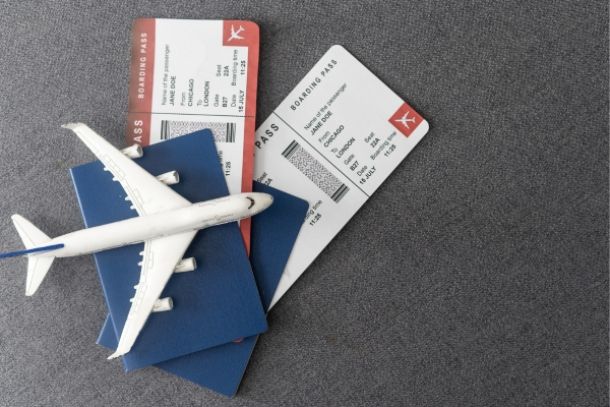Best Time of the Year to Buy Cheap Flights
Best Time of the Year to Buy Cheap Flights
Finding the perfect flight at a bargain price isn’t just about hunting deals—it’s also about timing your purchase. While airfare can fluctuate daily, there are specific times of the year when booking tickets tends to yield significantly lower prices. In this article, we dive into seasonal trends, share research-backed insights, and provide practical tips to help you determine the best time of the year to buy cheap flights.
Seasonal Trends in Airfare Pricing
Airlines adjust their pricing based on seasonal demand, competition, and consumer behavior. Generally, high-demand travel periods such as summer vacations, major holidays, and winter breaks see prices soar due to increased demand. Conversely, off-peak seasons often bring lower fares as airlines try to fill seats on less busy routes.
- Peak vs. Off-Peak Seasons:
Peak seasons usually include summer (June through August) and the winter holiday period. During these times, flights are in high demand, and prices can skyrocket. In contrast, the shoulder seasons—late fall and early spring—often feature lower fares as fewer people travel during these transitional periods. - Midweek vs. Weekend Bookings:
Research shows that booking flights on certain days of the week may also affect pricing. Typically, midweek flights are less expensive than weekend flights. Airlines might offer deals on Tuesday or Wednesday when the booking system recalibrates after a busy weekend. - Advance Purchase Window:
For many routes, booking in advance can yield significant savings. Many experts recommend buying tickets between one to three months ahead of domestic travel and up to six months in advance for international trips. However, exceptions exist—last-minute deals can sometimes be found, particularly during off-peak periods.
Key Insights from Industry Research
Several studies and travel industry experts have analyzed fare patterns over the years. Findings include:
- Holiday Booking Patterns:
Airlines tend to increase prices several weeks before major holidays like Thanksgiving, Christmas, or New Year’s. The best strategy is to book well in advance if your travel dates coincide with these periods. Conversely, post-holiday periods can present lower fares as travel demand decreases. - Sales and Promotions:
Airlines periodically offer sales that aren’t strictly tied to the calendar. Black Friday, Cyber Monday, and certain mid-year sales events can bring deep discounts even during peak seasons. Keeping an eye on these promotions can yield unexpected savings. - The “Sweet Spot” for Airfare:
Many travel experts identify a “sweet spot” for purchasing flights. For domestic travel, this is often around 6-8 weeks before departure, while for international travel, the optimal booking window can be anywhere from 2-5 months out. These windows tend to balance supply, demand, and the risk of last-minute price hikes.
Practical Tips for Timing Your Purchase
- Monitor Fare Trends:
Utilize flight search engines like Google Flights, Skyscanner, or Kayak that provide fare trend charts. These tools allow you to see how prices have fluctuated historically and offer predictions on whether fares might drop further. - Set Up Price Alerts:
Price alerts are invaluable. Once you set your travel parameters, you’ll receive notifications whenever there’s a significant drop in fares. This proactive approach ensures you don’t miss the window of opportunity to book at a lower price. - Be Flexible With Travel Dates:
Flexibility is one of the best weapons in the arsenal of a budget traveler. If you’re open to adjusting your departure or return dates by a few days, you might uncover significantly cheaper options. Even small changes can lead to savings. - Consider Alternative Airports:
In regions with multiple airports, fares can vary dramatically from one location to another. Compare options to see if flying out of or into a nearby airport can lower the overall cost of your journey. - Leverage Off-Peak Times:
If your schedule permits, consider planning trips during off-peak seasons. Not only will you likely encounter lower fares, but you may also benefit from a less crowded travel experience and lower costs for accommodations and activities. - Be Ready for Flash Sales:
Airlines occasionally launch flash sales that last only a few hours. To catch these fleeting deals, follow airlines on social media, subscribe to newsletters, and use mobile apps that offer real-time alerts.
Balancing Cost with Convenience
While finding the cheapest fare is a priority, it’s essential to balance cost with convenience and overall travel experience. Sometimes, a slightly higher fare might come with benefits like better flight times, fewer layovers, or more reliable customer service. Assess your priorities before making the final decision—saving a few dollars may not be worth extra travel time or discomfort.
Final Thoughts
The best time of the year to buy cheap flights is not fixed; it varies by destination, travel season, and even the day of the week. However, understanding seasonal trends and using smart tools to monitor and predict fare changes can put you in a strong position to secure a great deal. Whether you’re planning a family vacation during the shoulder season or an international adventure timed around industry promotions, a well-timed purchase can significantly reduce travel expenses.
By keeping a close watch on fare trends, setting up price alerts, and remaining flexible with your travel plans, you can take advantage of the optimal booking windows identified by industry experts. Remember, the world of airfare pricing is dynamic—what works for one trip might not work for another, so continuous research and adaptability are key. With careful planning and a little bit of luck, you can unlock incredible savings on your next flight and enjoy more adventures for less.


